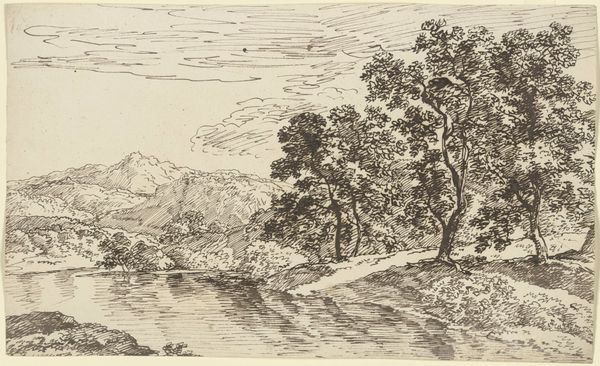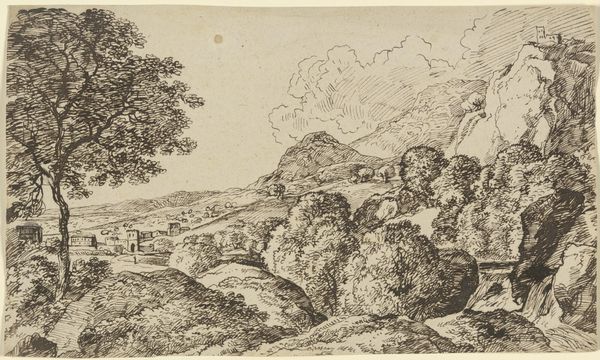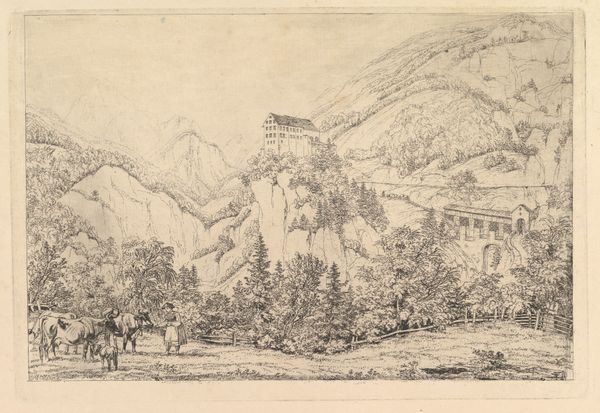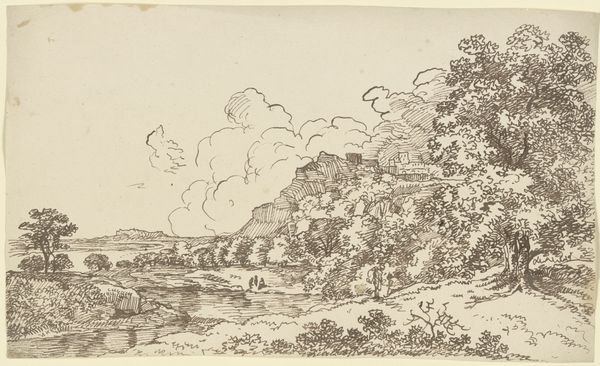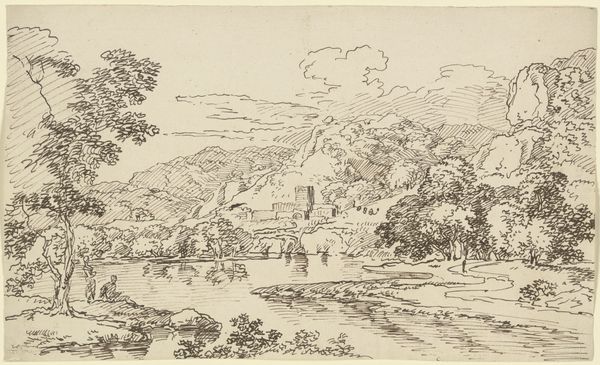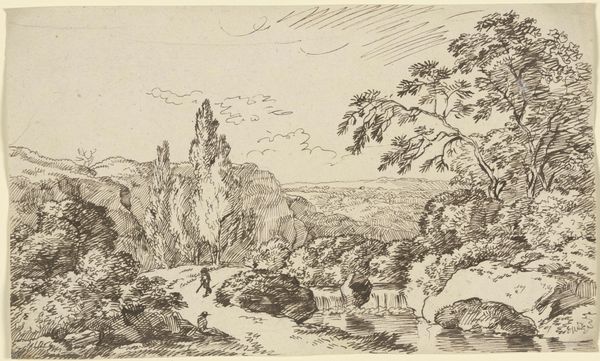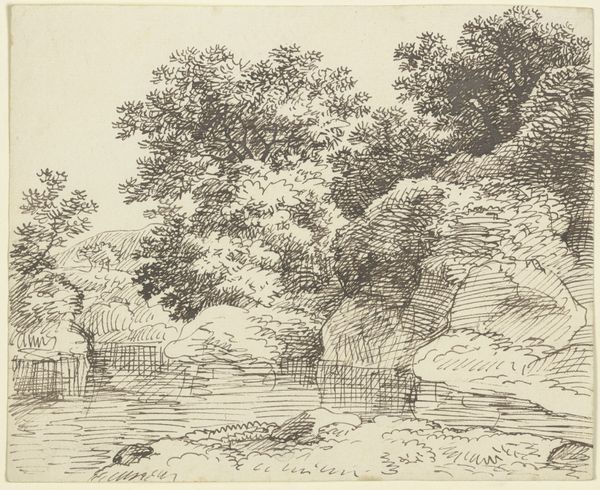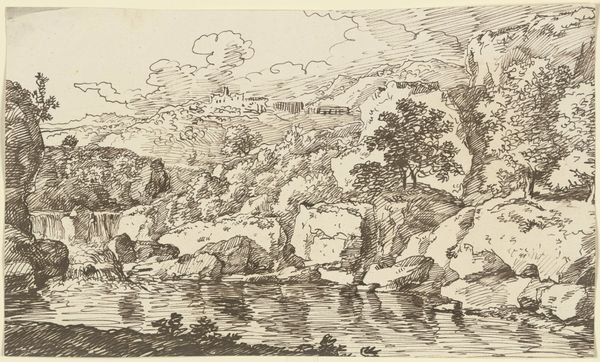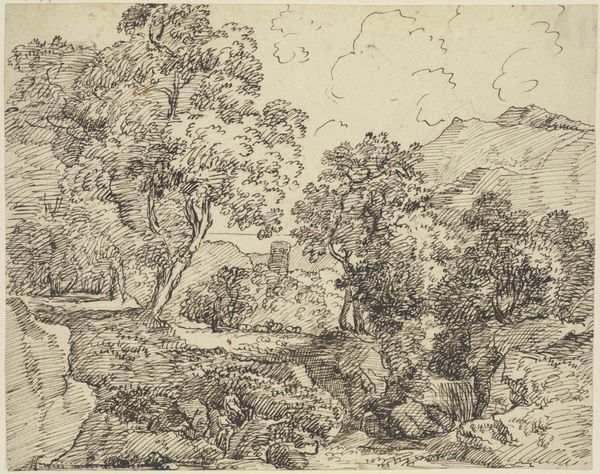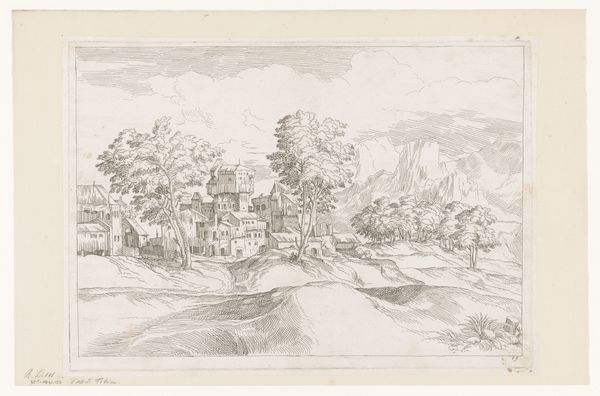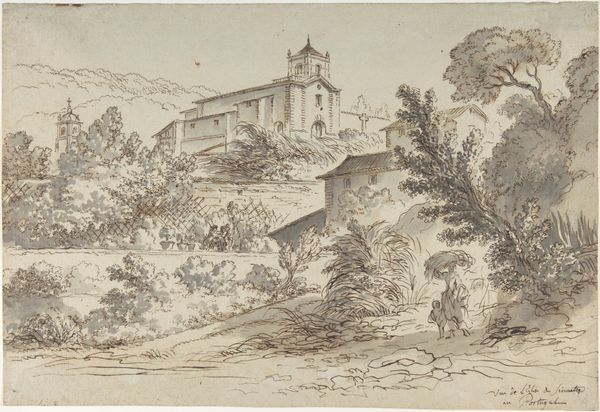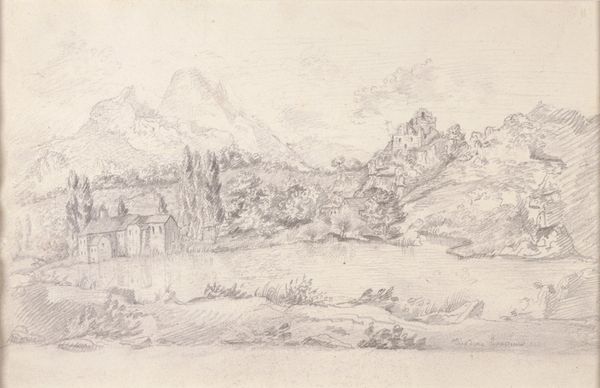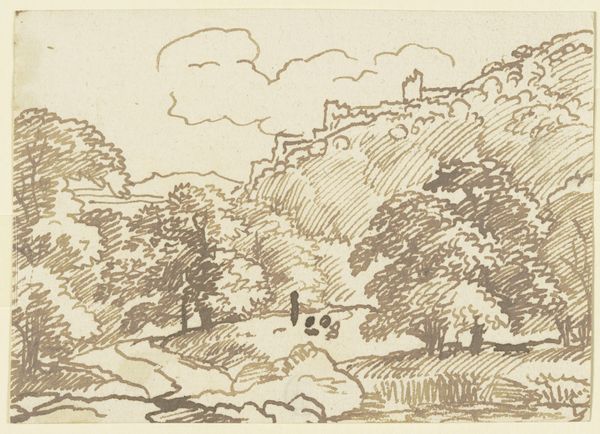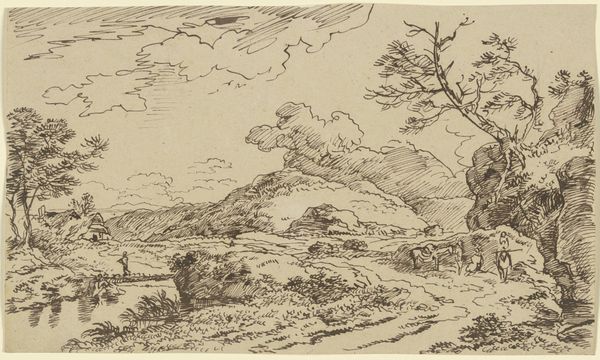
aquatint, drawing, etching, ink, architecture
#
aquatint
#
drawing
#
pen drawing
#
neoclassicism
#
etching
#
landscape
#
figuration
#
ink
#
romanticism
#
15_18th-century
#
line
#
architecture
Copyright: Public Domain
Curator: This is a print by Franz Kobell, entitled "Landschaft mit antiken Ruinen und Staffagefiguren," which translates to "Landscape with Antique Ruins and Staffage Figures." The exact date is unknown, but it is held here at the Städel Museum. Editor: Intriguing. At first glance, it appears rather romantic, doesn’t it? There’s a melancholy mood evoked by the detailed cross-hatching and the crumbling architecture receding into the background. The whole composition, even with its linear focus, seems almost dreamlike. Curator: Indeed. Note how Kobell employs aquatint and etching, combined with ink, to create a rich tonal range despite the monochrome palette. Observe also the linear quality and the contrasting textures achieved through the etching, especially in rendering foliage and distant architectural features. Editor: What strikes me are the figures, or perhaps, more specifically their relative scale. The artist is seemingly downplaying the role of humanity. Curator: Yes, precisely! In considering the social context of such landscapes, remember the fashion for the Grand Tour, a tradition of visiting classical sites. Artists aimed to capture the spirit of the past for consumption, as this print would allow a broader audience to experience it from afar. The landscape itself becomes a character of historical narrative. Editor: I’m interested in that. Beyond this being documentation, the semiotic play between the solid, angular, rational ruins in contrast with the softer, textured, and perhaps "emotional" nature adds to its complexity. Curator: And the architecture, with its formal Neoclassical elements, becomes fragmented in the overall scene. Editor: Ultimately, Kobell is giving us more than just a pretty landscape. He gives us a visual commentary on history, decay, and the ongoing dialogue between nature and civilization. It's thought-provoking in the truest sense. Curator: It highlights the enduring appeal of ruins, serving as a meditation on time and impermanence. Its artistic success lies in these simple arrangements of line and form to address some important themes.
Comments
No comments
Be the first to comment and join the conversation on the ultimate creative platform.
